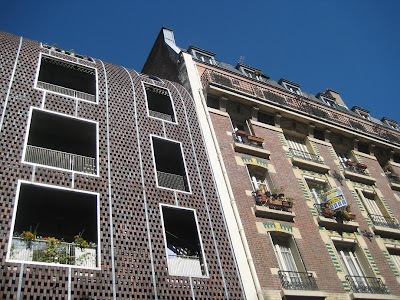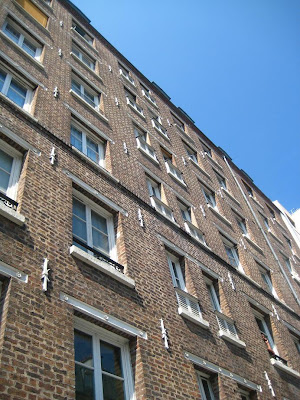 Built for a rich banker who needed a large structure to store his significant collection of renaissance art, this impressive house at first looks much older than it is. The design touches have a mixture of gothic and renaissance influences, and the brickwork is distinctly medieval. The walls notably feature the diapper pattern of darker diamond forms, but this style was to go quickly out of fashion.
Built for a rich banker who needed a large structure to store his significant collection of renaissance art, this impressive house at first looks much older than it is. The design touches have a mixture of gothic and renaissance influences, and the brickwork is distinctly medieval. The walls notably feature the diapper pattern of darker diamond forms, but this style was to go quickly out of fashion.The exterior today looks somewhat ludicrous and pretentious, but the interior is apparently of greater interest. Nevertheless, it is always interesting to see such brick craftmanship in Paris, even if it is a mere copy of older constructions.
Address: 1 Place du Général-Catroux, 75017Architect: Victor-Jules Février
Year of construction: 1878-84






 10:01 PM
10:01 PM
 Adam
Adam













